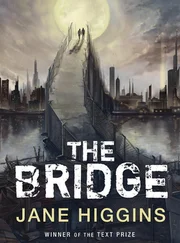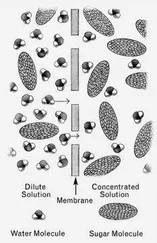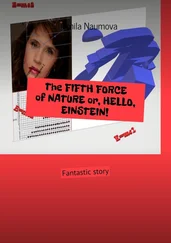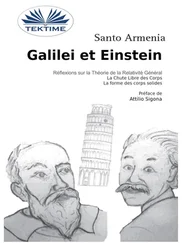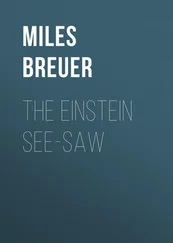Alice thought about that while she made notes.
“As for the dancin’,” Whitey continued, “there’s the Gaslight Inn up toward Dallas, but there’s mostly just kids there, and anyhow the music’s too damn loud. Maybe you’d like P. J.’s better.”
“P. Is? What’s that?” asked Alice.
“It’s a little private club, what you might call a waterin’ spot,” said Whitey. “It’s in a kinda trailer near the north end of the ring, over by Palmer. P. J. is the lady that runs it. She’s got a jukebox and places where you can sit indoors or outdoors and have an ice-cold beer, and there’s a little dance floor, too. The local folks like it, and some of the SSC people go there, too. Has what you might call ‘local color.’ There’s lotsa little beer joints like it all over the county, but I kinda like P. J.’s best. It really jumps on Friday and Saturday nights. They’s a few fights now and then, but they don’t amount to much.”
“That sounds interesting,” said Alice noncommittally, wondering how many trucks were found in ditches near P. J.’s on Sunday morning. “Perhaps I’ll try it sometime.”
Whitey looked at her inquiringly, his eyebrows raised.
“Sometime when I’m not so busy,” she added. She was quiet for a while as she wrote rapid notes. Then she turned to a fresh page in her notebook. “Whitey, when they were first building the SSC, there were some news stories about the problems with imported fire ants. Are they still a problem?”
“Hope ta tell ya they are,” said Whitey. “Those damn little bugs are the ruination of Texas. Get into ever’thang. When my daddy was in the oil bidness, he had no end of trouble with them damn fire ants. He’d set up to drill a well and bring in his trailer and equipment. If he put the trailer over a fire ant mound, the things ‘ud start chewin’ into the trailer insulation, then they’d get into the wirin’ and the plumbin’. The next thing you know, you’d wake up with fire ants in the damn bed with you.”
“Can’t you spray them or something?” asked Alice.
“They sell lots of sprays around here, there’s long shelves full of ’em at the stores, but they just don’t do much to fire ants,” Whitey answered. “I think they’re protected by the EPA or somethin’. When Daddy was drillin’ a well, ever’ once in a while he’d drive down to Mexico and buy some insecticides down there that would kill the damn things. Was against some damn law, but it sure as hell killed the fire ants.”
“Can’t the Texas government do something?” asked Alice. “With all the genetic engineering and biotechnology, I would have thought they could deal with a few ants.”
“The Texas Department of Agriculture has sure tried,” said Whitey. “Still tryin’, I guess. They got them bug scientists over at Texas A&M University to raise some fire ants of their own, and they fixed those boy ants to make ’em, you know, impotent?”
“You mean sterile,” said Alice, suppressing a smile.
“Yes’m, sterile, I guess. Anyhow, they turned thousands of ’em loose when the fire ant queens was supposed to be, you know, a-swarmin’.” He grinned. “But it didn’t do no good. Guess they couldn’t fool them queens with impotent boy ants. There’s as many fire ants as ever.”
Alice scribbled in her notebook. “Do they ever get into the equipment at the SSC?” she asked.
“Well, they sometimes get into our wirin’ in the surface buildings. Lotsa relays and contactors and transformers have burned up because of the damn fire ants. Keeps me busy fixin’ ’em. Now the SSC has a whole crew of bug experts that goes around in special bugproof suits, spraying ’em and digging ’em outta the ground.
“But the big ring is way down under the ground, two or three hundred feet down there, and them ants don’t like to dig down that far. Oh, sometimes they crawl down a conduit pipe or something, but it don’t amount to much. Never caused any real problems down in the ring tunnels.”
Alice nodded. “Thanks, Whitey,” she said. “I have to go do some unpacking now. I really appreciate the information. Hope I’ll see you again soon.” She gave him a big smile.
Tonight after dinner, she decided, she was going to write another scene for F as in Fire Ants before going to sleep. She looked back at Whitey and smiled as she climbed her porch steps. He’s going to make a very good character for the book, she thought.
TUNNEL MAKER DREW THE DATA STREAM INTO HIS SENSORIUM and examined the pattern of its time fluctuations with anticipation. The detections of ultra-high-energy concentration in the neighboring Bubble had reappeared five rotations ago, then stopped again. There seemed to be a pattern to the recent stops and starts. If the pattern held, the ultra-high-energy concentrations should start again soon.
He was excited at the prospect of making his first Bridge. Three orbits ago he had been designated Creator of Bridges. Now, at last, he could practice the craft that was the basis of his current assignment.
Tunnel Maker examined the long chain of energy storage receptacles that stretched off into the distance in the station bay. They were vessels for storing antimatter, essentially pure energy. The receptacles assigned for his use had been steadily filling with antimatter for half a dozen rotations. He noted with satisfaction that they were nearly at maximum capacity.
The Bridge-making apparatus occupied most of the next station bay, a massive engineering work of energy-flow channels, field generators, and particle directors.
Carefully Tunnel Maker activated the diagnostic network. The neural diagnostic nodes indicated no problems. He initiated a dynamic test procedure to verify the status of the device, but he had no real doubts. All was ready for the next occurrence of a trigger.
The third station bay contained the tools that he and some collaborating Individuals would use after the microscopic Bridge had been created. The initial aperture of the Bridge, the Bridgehead, would be only a few atomic diameters, just sufficient for manipulation with a beam of coherent light or a stream of charged particles.
Light was preferred because massive particles significantly altered the energy balance between the two Bridgeheads, the station end gaining energy with each passing particle and the Bridgehead in the other Bubble losing a corresponding energy. This could build up to the point of instability, when it became necessary to annihilate or create dark matter at the Bridgeheads to redress the energy balance. The same effect occurred when light passed through the Bridge, but the size of the effect was much smaller. He practiced with the coherent light manipulator, Writing the assembly of a simple nanomachine from the molecules of the station wall, then Reading it to verify the accuracy of the process.
Satisfied now, and with a rising sense of excitement, Tunnel Maker touched the central neural node, activating the trigger mechanism that would initiate the complex Bridge-making process.
Extrapolations of the periodic structures found in recent recordings from the new Bubble indicated that a concentration of energy sufficient for a Bridge trigger might be expected to resume in one or two rotations. It was now only a matter of time. Feeling simultaneously proud and impatient, Tunnel Maker set himself to wait for a trigger.
ALICE FOLLOWED THE VISITOR INFORMATION signs dotting the SSC west campus, finally parking her car near the entrance of a low building with a geometrical roof. She recognized it as one of the “architectural statement” variety, although she could not quite make out what the statement was supposed to say. She wondered if the convoluted roof was watertight in a good Texas rainstorm. In her experience there was a good correlation between architectural masterpieces and leaky roofs. As she stepped out of her air-conditioned car, the wall of Central Texas heat hit her like a physical blow. She was feeling a bit nervous and hoped she wouldn’t start to sweat.
Читать дальше


